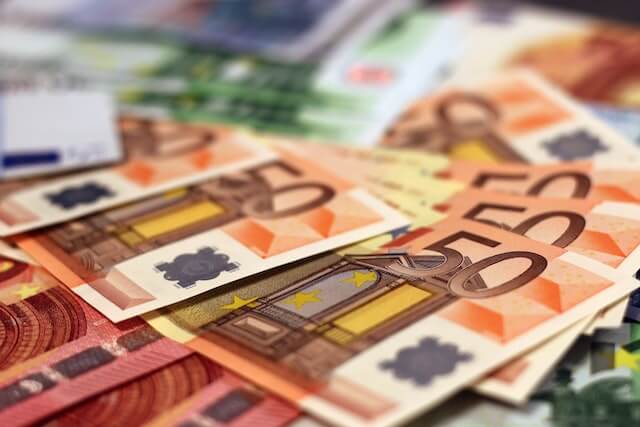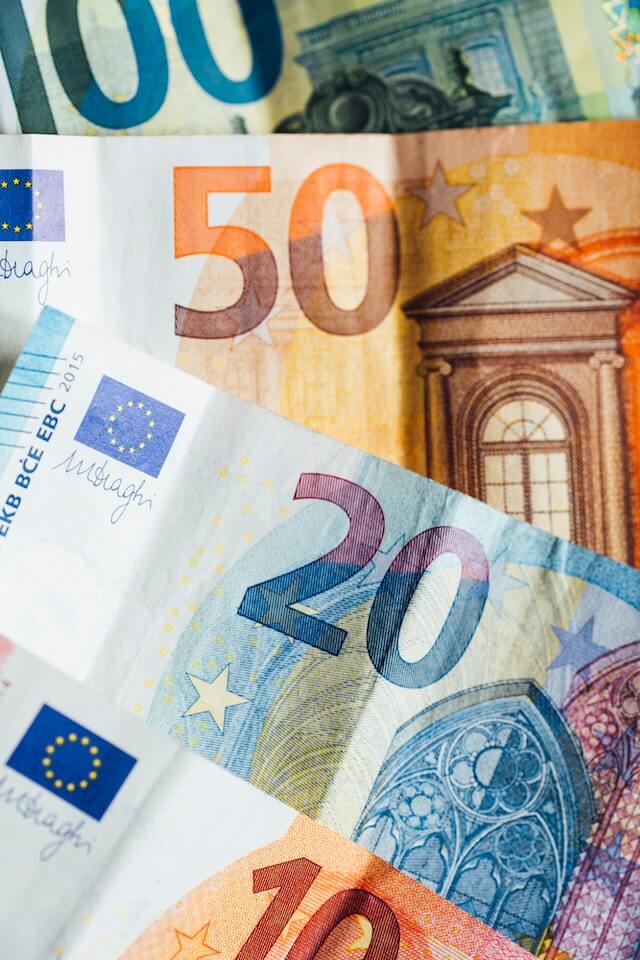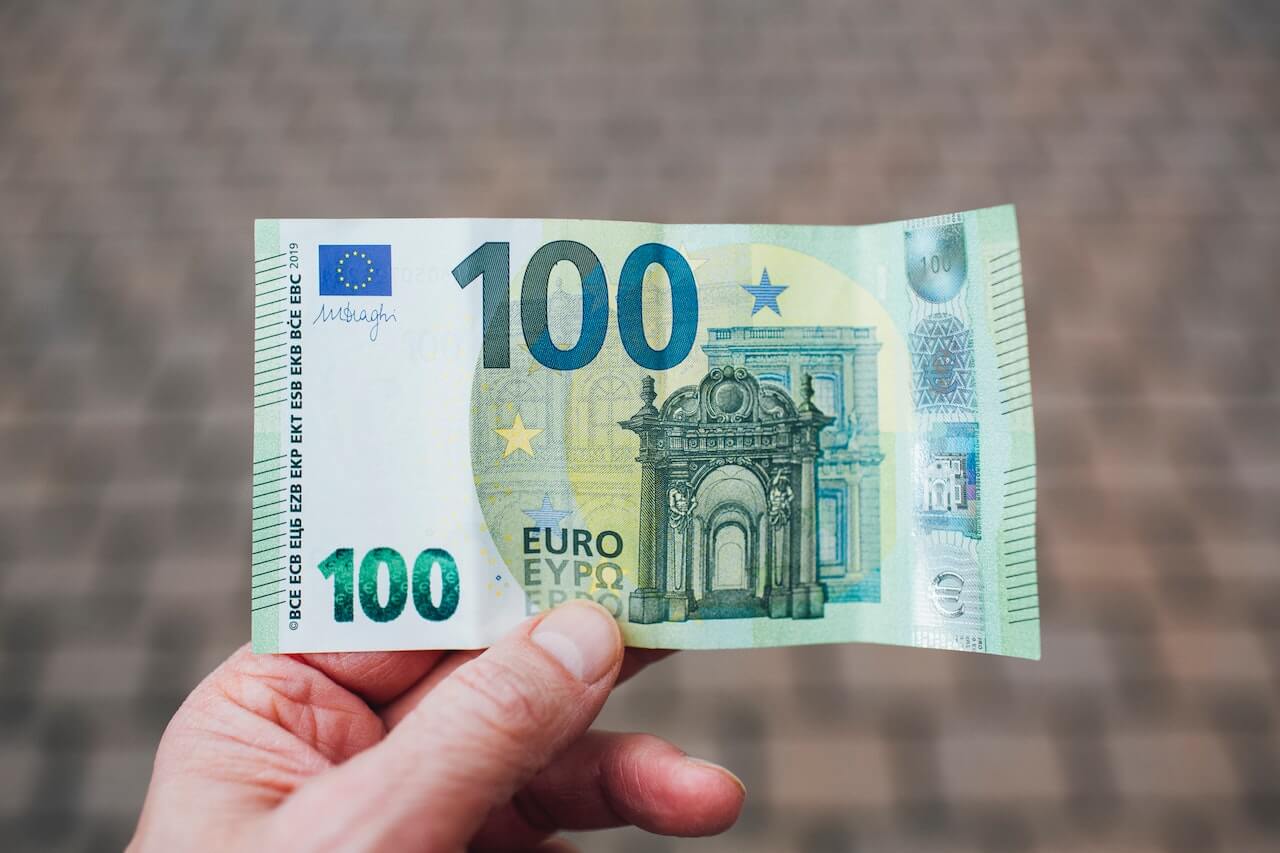We’re sure everyone has wondered at some point how money is created: why can’t you just print it at home? What is special about the banknotes they give us at the bank? Para despejar todas esas dudas, en este artículo vamos a hablar de cómo se hacen los billetes, qué tienen de característicos y, sobre todo, cómo se produce el material del que están hechos: el papel moneda.
What is paper money?
Before understanding how money is created and what is special about it, we must have a closer look at what banknotes are made of. As you may have seen, the smell of a bill, its roughness or even its shine has nothing to do with the paper that people usually have at home. This has a reason. And the bills are not made of regular paper, but of paper money.
Paper money is, without going any further, a piece of paper or synthetic fiber that has particular characteristics that make it difficult to manipulate and that, in addition, has a specific value that does not have to be monetary.
We are used to seeing paper money on banknotes. However, in certain situations the country’s Central Bank sees the creation of more banknotes as necessary, so they get to work.
Making money: what to take into account?
The money creation process is not something that is normally carried out. We must keep in mind that, as a general rule, those bills and coins that are in circulation are always the same. Let’s see it with an example.
When a person goes to deposit money into the bank, its value goes from being in its physical form to its electronic form; that is, it is no longer tangible. However, this money is stored inside the ATM itself and is the same one used when another person wants to do the procedure in reverse: Go to withdraw money, converting it from its electronic form to its physical form.
This happens, in general terms, with all money in circulation: It passes from hands to hands, so it is always in motion. However, in certain situations the country’s Central Bank sees the creation of more banknotes as necessary, so they get to work.
It is worth mentioning that a country cannot start printing money just because this would devalue the currency very quickly. Given this situation, prior to the creation and putting into circulation of the new banknotes, they must make some adjustments, among which we find the creation of the monetary base.

The process by which the Central Bank increases its assets to support the putting into circulation of new money is called the creation of the monetary base. The creation of new banknotes or coins, as we mentioned before, must be done under absolute control, and must also be supported by other actions. In these cases, before being put into circulation, the Central Bank can carry out different tasks that will increase its monetary base, such as:
- Increase your amount of gold and currencies
- Grant more credit to commercial banks that need liquidity and to the public sector.
- Buy public debt.
How money is created?
Now that you know what the process is like prior to printing new money, it’s time to explain how the money itself is made.
In every country there is an institution that is responsible for printing money. In the case of Spain, this is carried out in the famous National Mint and Stamp Factory. When it is necessary to print more money, to replace damaged or old bills, after receiving orders regarding the amount of money to print, the work begins.
If they are bills, they are printed on paper money. Other materials are added to this that help reinforce and guarantee the veracity of the money that is being produced. An example of this is fine thread fibers, polyester or micro-printed web.
Each of these elements has a function that we will explain later. What we must be very clear about is that each element added to the banknote helps to ensure its originality and, furthermore, its resistance and flexibility during the time it is in circulation.
With the help of large printers, plates of up to 8,000 sheets are engraved. It is important to emphasize that the ink used is not ordinary, but rather a special security ink for banknotes, which makes possible the optical color change effects that banknotes have.

Subsequently, the printed plates first go through a check that can be carried out using artificial vision systems to evaluate the quality of the paper money. These help find even the slightest defect that paper money may contain.
After this first review, a second manual check is carried out, definitively separating the good prints from the defective ones. The latter will be destroyed and eliminated.
The last step in this chain is to convert the giant plates into individual bills. To do this, the different printed sheets are stacked and cut with industrial guillotines, thus creating the bills that everyone normally carries in their wallet.
Security measures for paper money
As we mentioned before, different elements are added to paper money that help ensure its originality. At this point we are going to talk to you a little more in depth about what are those special characteristics that ensure the veracity of the banknotes.
Watermark
On the left side of the banknotes, below the symbol of the European Union, we find the first of the security measures: If we hold the banknote up to the light, we will find a faint symbol or image that tells us the value of the banknote.
Texture
The texture of the bills is not the same over the entire surface. If we carefully analyze the feel of these, we will discover that there are areas that are thicker than others, which makes them difficult to fake.
Security thread
Around half of the bill, if we examine it against the light, we will find a dark transverse band in which we can observe its value and which can hardly be counterfeited.
Hologram
One of the best-known verifications is that of the hologram band included in the right area of the paper currency. In this we can see how the image displayed when we rotate or move the bill: One of the positions will show the euro symbol, while the other will show the value of the bill in question.
The same thing also happens on the reverse, however, in this case it is not a band. We can see a small square in which it also alternates between a figure that indicates the value of the bill and, in this case, a door or window.
Color change
The €50, €100, €200 and €500 banknotes also have an additional security measure. On the back we can see, in the lower right part, a figure with the value in question, which changes color just as happens with the holographic band.
Microtext
Certain areas of the bill feature characters on a smaller scale, which may be legible if a magnifying glass is used to assist. These characters are clearly distinguished, without presenting any type of blur.
Infrared properties
Under infrared illumination, the emerald green number, the right portion of the central motif and the silver stripe are visible on the front of the bill. On the back side, only the figure denoting the value of the bill and the serial number can be distinguished, arranged in a horizontal orientation.
Standard UV light
The paper does not shine or emit light, it looks dark. There are fibers in it, each with three colors. The EU stars, small and large circles glow yellow.
On the reverse, a quarter circle and other areas glow green. The serial number and a band are red.
Special ultraviolet light (UV-C)
On the front, tiny circles in the center emit a yellow glow, while larger stars and other areas radiate an orange glow. Additionally, it is possible to observe the presence of the “€” symbol.
Conclusion
As you have seen, the process of creating banknotes and printing paper money is long and tedious. It goes through rigorous control from the beginning; firstly, from the banks and, after that, through the banknote verification systems.
